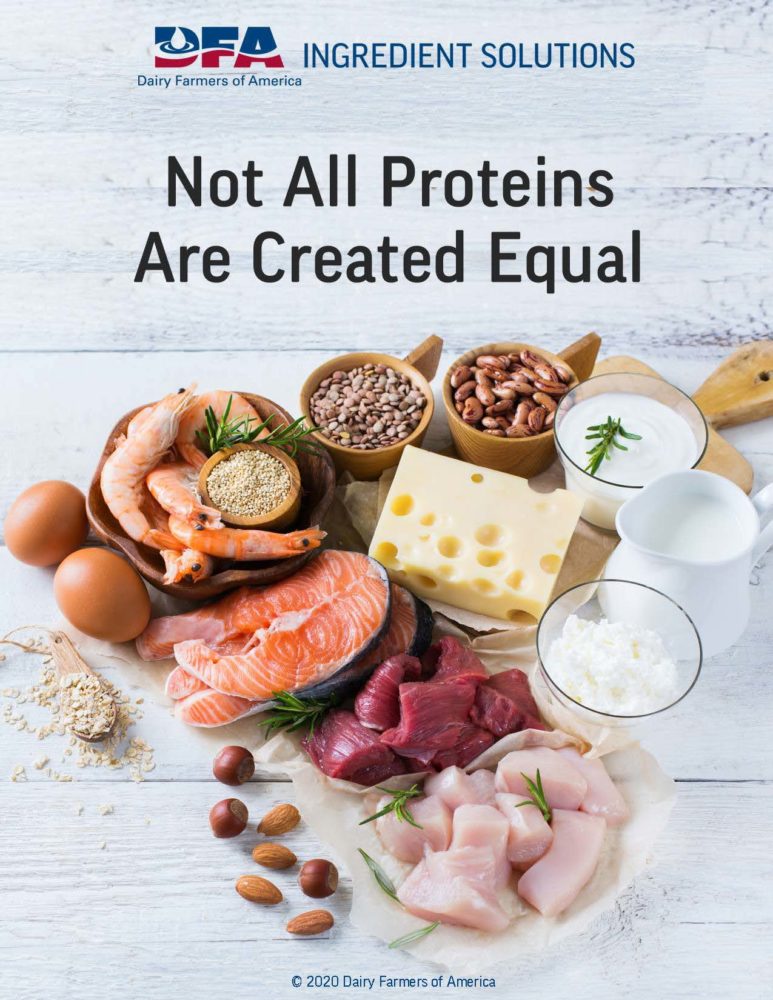Home > Not all proteins are created equal

Download Now
In this whitepaper we take a look at:
- Growing plant protein market share
- Benefits of milk protein
- Protein content of dairy proteins vs plant proteins
- Anabolic properties of plant-based proteins vs dairy-based proteins
- Flavor control
Not all proteins are created equal
With the rise in plant-based food, formulators are faced with the question of using plant- or dairy-based proteins in their applications. Sixty-four percent of Americans want to consume more protein because they provide energy, make people feel fuller longer, help with reduced waist size, and support cardiovascular health. So which proteins really pack more punch?
We know that all fats are not the same, and there are both simple and complex sugars. But how much do we know about proteins? Is a protein… just a protein? Many of us probably think of meat when we think protein, but as consumers are becoming seemingly more interested in plant-alternatives, we have to take a deep dive into dairy proteins vs plant proteins.
Sixty-four percent of Americans want to consume more proteins, and protein product introductions have increased by a factor of five in the United States in the past 10 years. Food and beverage products featuring a plant-based claim posted an average annual growth rate of 68% over the past five years.’ Why is this? Because dietary proteins deliver many health benefits: they provide energy throughout the day, make people feel fuller for longer, help with weight loss and reduced waist size, help manage blood sugar, support cardiovascular health, and can prevent muscle loss that comes with age. In short, proteins fit perfectly into consumers active and busy lifestyles – at any age.
